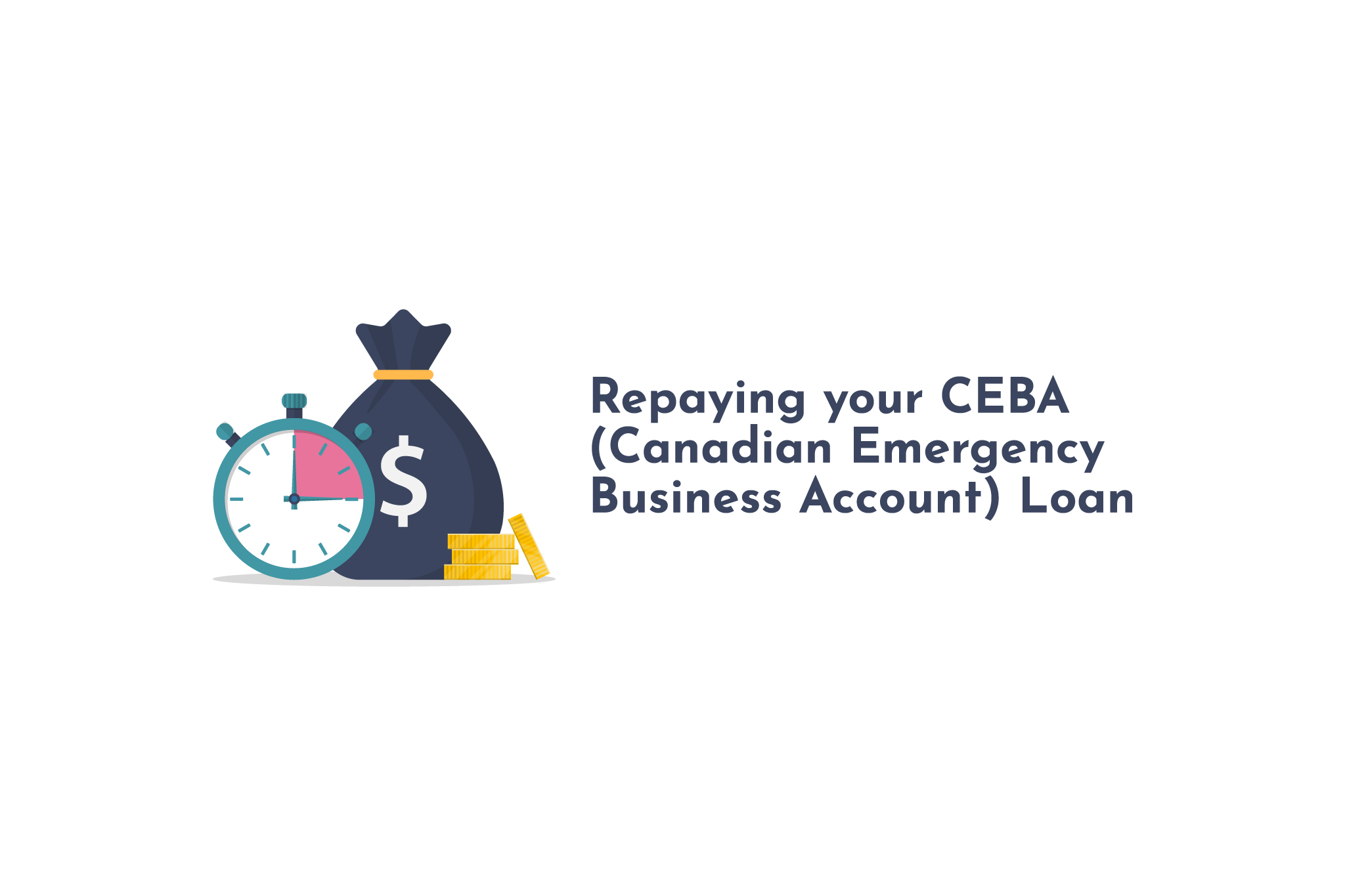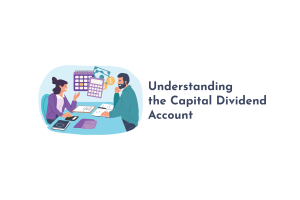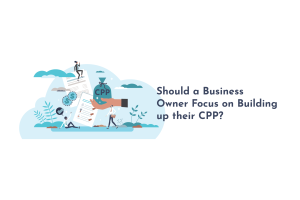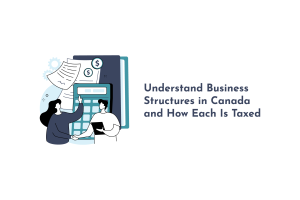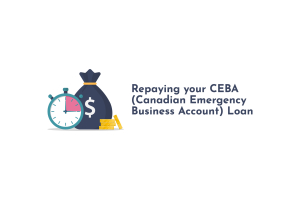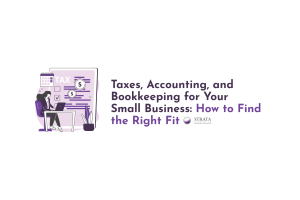Some days it seems like so long ago. In March of 2020, the world faced the COVID-19 Pandemic, and we were faced with rulings from the government that altered our daily lives almost immediately. Many small businesses were forced to close for in-person commerce with no notice. While these businesses tried to pivot into a model more focused on e-commerce, they were faced with a period of time where they had limited (or no) sales revenue. This was a very stressful time for business owners. One of the ways that the government offered immediate support was the introduction of the Canadian Emergency Business Account (CEBA), a loan program that simplified qualification requirements and offered businesses an infusion of cash to remain operational when their revenue had been slashed significantly (or even dried up completely). Now, as the end of 2023 approaches, business owners are faced with repayment terms of the CEBA loans and the potential of beginning to pay interest on the money. Let’s have a quick refresher on the way that the CEBA was structured and then look at options as the repayment deadlines approach.
In This Article:
- CEBA (Canadian Emergency Business Account) Refresher
- CEBA Repayment Options
- Strategies You Could Consider for Repaying your CEBA Loan
- Why Does This All Matter
CEBA (Canadian Emergency Business Account) Refresher
With the onset of mandatory lockdowns during the COVID-19 Pandemic, the Canadian Federal Government instituted the Canadian Emergency Business Account (CEBA). Many businesses were hit hard when they were forced to close their doors for extended periods of time, with sales eliminated or severely reduced. In response to this, the CEBA program was launched to support businesses. Let’s take a quick look at the timeline.
- April 2020 – CEBA is launched and, at that time, offered up to $40,000 to qualifying businesses.
- December 2020 – the CEBA limit was extended to allow qualifying businesses to borrow an additional $20,000.
Under the terms of the CEBA, you weren’t required to repay the loan immediately. There was no interest applied initially, and if you met certain repayment criteria, a portion of the loan was eligible for forgiveness.
- Originally this repayment was required to be made by December 31st, 2022.
- This deadline was extended until December 31st, 2023.
Understanding the timeline, let’s look at some of the rules regarding interest calculations and repayment rules:
Interest – if you participated in the CEBA program, you were not charged any interest on the loan balance from the beginning of the loan until December 31st, 2023. After January 1st, 2024, you will be charged 5% interest per annum.
Repayments – It was not required to repay any of the principal before December 31st, 2023. If you have an outstanding balance as of December 31st, 2023, that amount is converted to a two-year term loan with 5% interest applied.
Forgiveness – This is one of the most important elements of the CEBA program. There are requirements laid out in the program that, when fulfilled by the end of 2023, allow for a portion of the original CEBA amount to be forgiven. For example, if you participated in the original CEBA and took the full $40,000 and have repaid $30,000 prior to the end of 2023, the remaining $10,000 is forgiven. For a complete set of examples of the repayment rules, check out this link: https://ceba-cuec.ca/ceba-faq/.
It is important to note that if you receive the forgiveness of the CEBA loan, the forgiven portion is taxable income and must be reported to CRA. Consult your accountant!

CEBA Repayment Options
One of the principal benefits of the CEBA program was that there was no interest charged leading up to the end of 2023. There is also the potential to have a portion of the loan forgiven, so it is important to look at what your options are to repay the loan and take full advantage of the loan forgiveness options.
- The first option is for your business to repay the loan from operating income now that some normalcy has returned to operations. This takes full advantage of the interest-free period and the loan forgiveness, so if your cash flow allows it, you should seriously consider repaying the loan up to the forgivable amount.
- If you are unable to get to the point where you reach loan forgiveness, you are now faced with a two-year loan that has a 5% interest rate attached to it. For example, if you have paid back $20,000 of the $40,000 you borrowed initially, you will need to pay $877.43 monthly to pay off the remaining $20,000 in the two-year period ending December 31st, 2025.
Strategies You Could Consider for Repaying your CEBA Loan
Let’s look at a couple of situations where the loan repayment hasn’t reached the threshold to trigger loan forgiveness. To make life simpler, I am going to base my examples on the scenario where the CEBA that was utilized was the original $40,000 offering. This is the account where the loan forgiveness is triggered by repaying $30,000 of that money.
- Carrying forwards the example from previously, if you have repaid $20,000 of the debt, you would be faced with a $877.43 monthly payment to pay off the remaining $20,000 over two years. This means that you would pay $21,058.32 in total for the $20,000 of CEBA money. Now consider instead, what happens if you borrow $10,000 to get you to the $30,000 requirement for forgiveness? Using the same two-year loan at 5% interest, you would pay a total of $10,529.04 total over the two-year loan.
- If you have been unable to repay any of the loan, you could wait until January 1st, 2024, when the CEBA converts to a two-year loan. Your monthly payments would be $1754.86, which totals $42,116.64 over the two years. The other option is to borrow $30,000 prior to the end of 2023. This pays enough to reach the forgiveness level, and at 5% interest, the monthly payment would be $1316.14 a month for two years. The total here is $31,587.36 over the term of the loan.
What you can see is that striving to reach that loan forgiveness amount is critical. I know that in the lending environment, we see today, you may be hard-pressed to find someone to lend you money at 5% interest. The math still holds up, though. In most cases, you would be better off borrowing the money to reach the forgiveness level, even if you are borrowing from a third party with less favourable terms. Sure, you may pay them a higher interest rate than 5% over two years, but the overall cost is significantly lowered by reaching that forgiveness level. In fact, from a pure cash flow perspective, you can afford to pay a significantly higher interest rate than 5% and still have the math work that you save a lot of money rather than allowing the CEBA to roll into the default loan amount and missing out on the forgiveness.
Please remember that I am using pretty simple math here, and I am ignoring the taxable income implications of the loan forgiveness. Consult your accountant before you make any decisions on what works best for you.

Why Does This All Matter?
Here’s the hard truth. Many businesses that were impacted by the COVID closures have not recovered. While they may have been able to resume some semblance of normalcy, these businesses are faced with the fact that the revenue that was lost during the lockdowns is simply gone. It has not been made up for by increased sales during the months following ‘normal business’ resuming. Let’s look at some information from the Canadian Federation of Independent Businesses. The CFIB estimates that just over 40% of the businesses that participated in the CEBA program are going to miss the repayment deadline that is upcoming at the end of 2023. This means that the repayment of the full amount will then become a two-year term loan, and this could create a cash flow pinch that many recovering businesses still aren’t equipped to handle. If you own a business that participated in the CEBA, you still have time to explore your options. Contact your accountant and set up a time to review what options are available to you and figure out a plan of how to proceed forwards.
